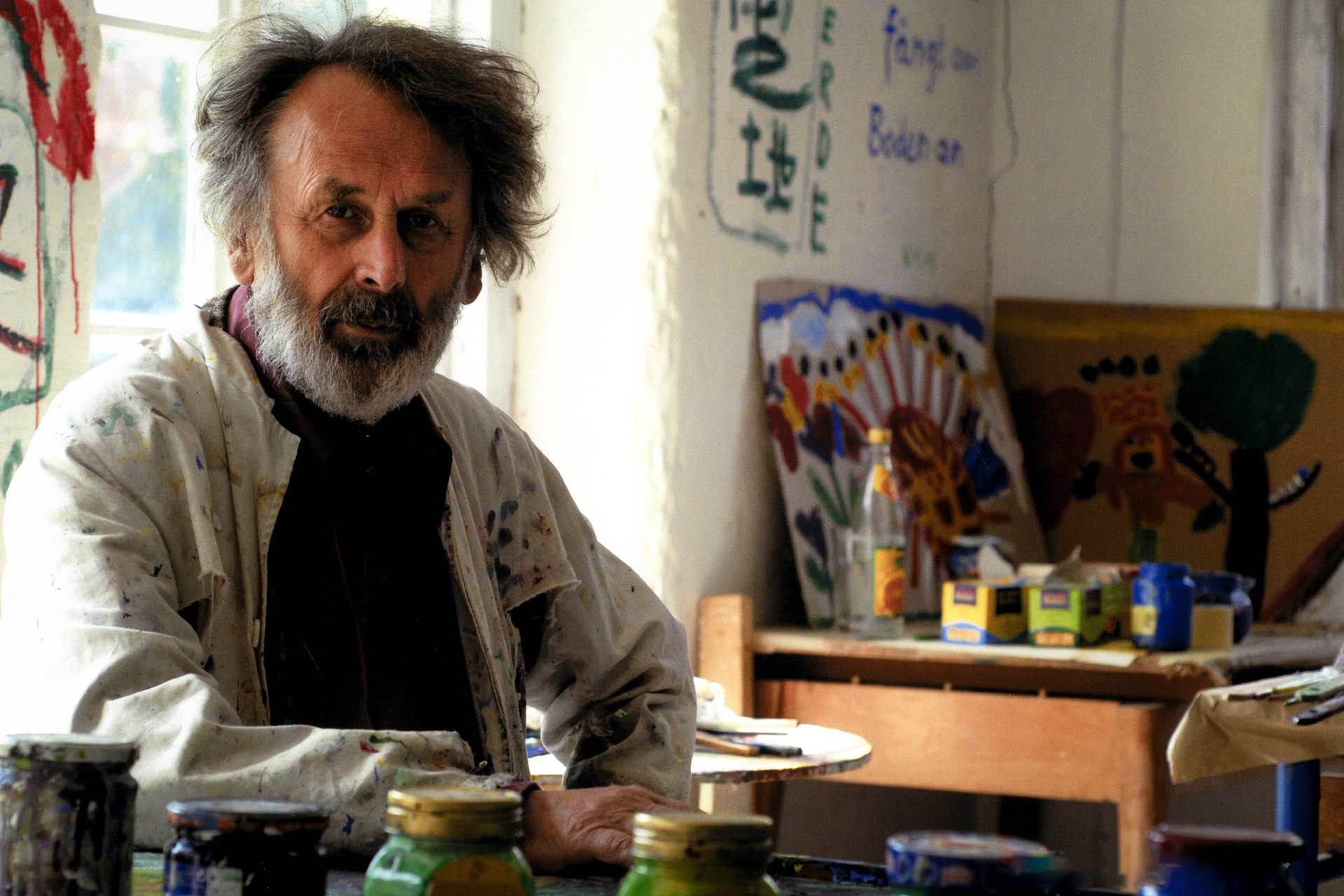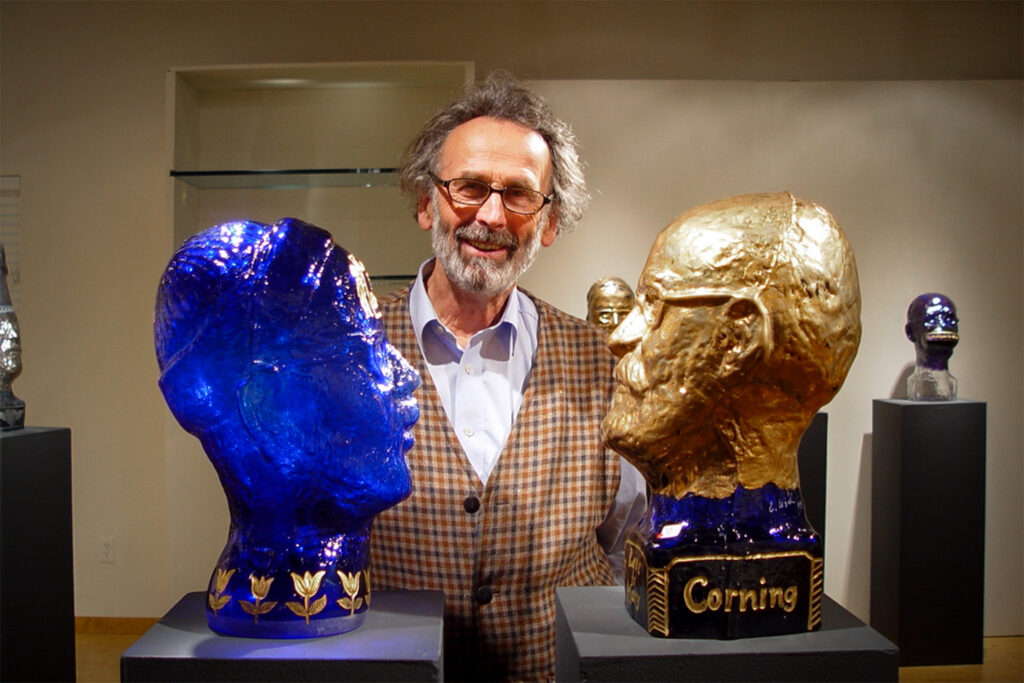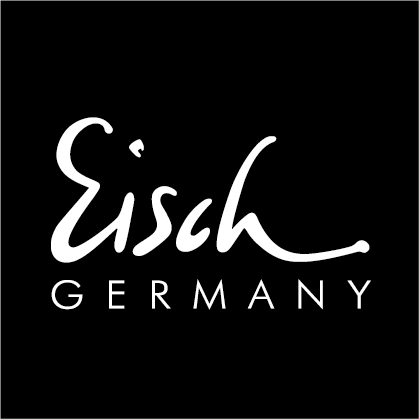Erwin Eisch

Erwin Eisch und die Glaskunst
Kraft, Hingabe und eine gehörigen Portion Ironie
Das Schweben seiner Figuren ist ein Stil-Merkmal von Eischs Kunst in allen Bereichen. Es ist sowohl Ausdruck seines eigenen Raumgefühls in Bezug auf Erde und Kosmos wie auch entstanden aus den Eindrücken barocker Wandmalerei, die ihn vor allem am Beispiel des Deckengemäldes von Franz Anton Rauscher in der Frauenauer Pfarrkirche Mariä Himmelfahrt von Jugend an begleitete. Daneben und gleichauf ist und bleibt er Maler und Zeichner. In Erwin Eisch gilt es den eigenwilligen Maler zu erkennen, der uns mit Kraft, Hingabe und einer gehörigen Portion Witz und Ironie in eine bildnerische Welt entführt, die uns neue Einsichten und Perspektiven vermitteln kann. Seine Zeichnungen zeigen einen vertrackten vordergründigen Humor, der sich meist schon im Titel ausdrückt, wie z. B. „Immer wenn ich blau bin“. Fordernder sind seine Gemälde – sie sind meist spröde und unbequem, sie drängen sich nicht auf, wollen aber lange und in Ruhe betrachtet sein, um uns ihre eigene Welt, den vom Künstler geschaffenen Kosmos, durchschaubar zu machen.„Das Ende der Kunst wurde zum Programm“.
„Ende der 50er Jahre bekam ich an der Münchner Akademie Kontakte zur Gruppe Spur. Und wir alle waren in dieser Zeit vom Tachismus, vom Informel beeindruckt. Ich merkte aber bald, daß es da für mich keine weitere Entwicklung gab. Gesellschaftskritik war dominierend, die 68er Studentenrevolte bereits spürbar. Das Ende der Kunst wurde zum Programm. So gründeten Max Strack, Gretl Stadler und ich 1960 die Gruppe Radama. Mit der Gedächtnisausstellung für Bolus Krim im Jahr 1961, in der wir das Scheitern der damaligen Avantgarde-Kunst vorgestellt haben, verabschiedete ich mich aus der Münchner Kunstszene. 1962 haben Gretl und ich geheiratet und gingen nach Frauenau. Da gab es die Glashütte der Familie Eisch und ich knüpfte dort an, wo 1952 mein Glasmachen begann. Erst Ende der 70er Jahre war Malerei wieder mein Thema. Es begann die Suche nach der Figur, die Abstraktion trat zurück. Der Malprozess wurde mein Weg zum Bild, zum Leben und zur Lebendigkeit.“ (Erwin Eisch im Interview mit Masahiro Hochida, 2002)
Erwin Eisch und seine Frau Gretel Eisch sind beide im Jahr 2022 verstorben.

Erwin Eisch wurde mit diversen Preisen ausgezeichnet</strong
- 1977 Ehrenpreis, Coburger Glaspreis
- 1982 Honory Membership G.A.S.
- 1985 1. Preis Coburger Glaspreis
- 1987 Kulturpreis Ostbayern
- 1992 Krystallnacht Project, Gold Award für „My love to Anne Frank“, American Interfaith Institut Philadelphia
- 1995 Lifetime Achievement Award G.A.S.
- 2002 Lifetime Achievement Award, Urban Glass, Brooklyn, NY
Sie sehen gerade einen Platzhalterinhalt von YouTube. Um auf den eigentlichen Inhalt zuzugreifen, klicken Sie auf die Schaltfläche unten. Bitte beachten Sie, dass dabei Daten an Drittanbieter weitergegeben werden.
Mehr InformationenSie sehen gerade einen Platzhalterinhalt von YouTube. Um auf den eigentlichen Inhalt zuzugreifen, klicken Sie auf die Schaltfläche unten. Bitte beachten Sie, dass dabei Daten an Drittanbieter weitergegeben werden.
Mehr InformationenSie sehen gerade einen Platzhalterinhalt von YouTube. Um auf den eigentlichen Inhalt zuzugreifen, klicken Sie auf die Schaltfläche unten. Bitte beachten Sie, dass dabei Daten an Drittanbieter weitergegeben werden.
Mehr Informationen